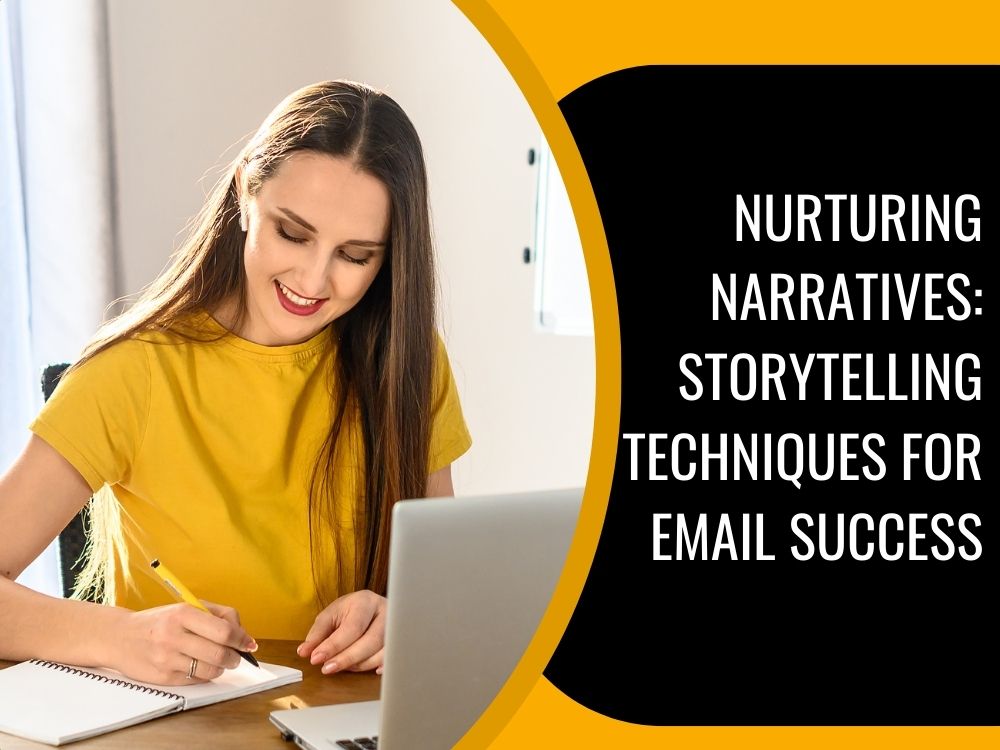Storytelling Techniques for Email Success
Picture this: your inbox is brimming with unread emails. Amid the noise, one catches your eye. It’s not because of a catchy subject line or a promotional deal but because it tells a story—one that resonates, engages, and compels you to take action. This is the transformative power of storytelling in email marketing.
As a business owner, marketer, or creator, you’re not just sending emails; you’re building connections. And what better way to forge those connections than through stories? In this guide, you’ll discover how to craft narratives that turn your emails into must-read content, driving engagement and conversions.
Table of Contents Storytelling Techniques for Email Success
Why Storytelling Matters in Email Marketing
The Science Behind Storytelling Techniques for Email Success
Stories are hardwired into our brains. They engage more areas of the brain than plain data, making the message memorable and impactful. Research shows that emails with a storytelling approach can achieve up to a 22% increase in open rates and a 36% boost in click-through rates compared to standard promotional emails.
Building Emotional Connections
Stories evoke emotions that data and offers cannot. When your subscribers feel connected to your narrative, they’re more likely to trust your brand and engage with your content.
Key takeaway: Every email you send is an opportunity to nurture a relationship, and stories are your strongest tool.
Key Elements of Effective Storytelling in Emails
Know Your Audience
Your story is only as good as its relevance. To captivate your readers:
- Segment your audience: Group your subscribers by demographics, behavior, or preferences.
- Create personas: Develop fictional profiles that represent your ideal customers, focusing on their challenges and aspirations.
- Use analytics: Dive into past email data to understand what resonates with your audience.
Crafting a Compelling Narrative
A strong narrative has three key elements:
- A relatable protagonist: Make your reader the hero or spotlight a real-life customer.
- A clear conflict: Highlight the challenge or pain point your reader faces.
- A resolution: Position your product or service as the solution.
Example: Instead of “Our software improves productivity,” try “Meet Sarah, a busy entrepreneur who saved 10 hours a week with our software.”
Personalization and Authenticity
Generic stories fall flat. Personalization makes your email feel like a one-on-one conversation.
- Use the recipient’s name: In subject lines and greetings.
- Include tailored details: Reference their past purchases, browsing history, or preferences.
- Share real stories: Highlight testimonials or case studies to add credibility.
Structuring Emails for Maximum Impact
Subject Lines: Your Story’s Hook
Your subject line is the gateway to your story. Use these techniques:
- Invoke curiosity: “The email that changed our customer’s life…”
- Create urgency: “Don’t miss this inspiring story—only today!”
- Add personalization: “[First Name], this could be your success story.”
Body Copy: Engage and Inform
Once the reader opens your email, your narrative should:
- Start strong: Begin with a compelling hook, like a surprising fact or an emotional anecdote.
- Stay concise: Break text into short paragraphs and use bullet points for clarity.
- Incorporate visuals: Images or graphics can amplify your story’s impact.
Clear and Compelling CTAs
Your Call-to-Action (CTA) is the bridge between your story and your goal.
- Use action-oriented language: “Discover your solution now.”
- Place CTAs strategically: Embed them within the narrative and at the end.
- Ensure clarity: Make the action simple and intuitive.
Examples of Storytelling in Email Campaigns
Case Studies: Real-World Success
Example 1: Nonprofit Impact Stories
Subject line: “How Your Donation Built a School”
Body:
- Introduce a child whose life improved through donor contributions.
- Share before-and-after images.
- End with a CTA to continue supporting.
Example 2: Behind-the-Scenes E-commerce Story
Subject line: “The Journey of Your Handmade Bracelet”
Body:
- Narrate the artisan’s process.
- Add visuals of the creation stages.
- Include a CTA to “Shop Now” or “Meet the Maker.”
A/B Testing for Storytelling
Testing reveals what resonates most with your audience:
- Experiment with different story types (e.g., customer stories vs. brand stories).
- Test subject lines for open rates.
- Analyze click-through rates for narrative styles.
Common Pitfalls in Email Storytelling (and How to Avoid Them)
- Overloading with Details: Stick to one story per email. Over-explaining can overwhelm your readers.
- Forgetting the Reader’s Perspective: Keep the focus on the subscriber’s needs and emotions.
- Neglecting Design: Ensure visuals, typography, and layout enhance readability and reinforce the story.
The Role of Automation in Storytelling Emails
Segmented Storytelling Techniques for Email Success
Use automation tools to:
- Deliver targeted narratives to specific audience segments.
- Send follow-up stories based on user interactions.
Dynamic Content
Personalize on the fly with:
- Custom images or text blocks tailored to user data.
- Adaptive CTAs based on previous engagement.
FAQ: Storytelling Techniques for Email Success
Q1: Why is Storytelling Techniques for Email Success?
Stories captivate readers by engaging their emotions, making your message memorable, and fostering trust.
Q2: What types of Storytelling Techniques for Email Success?
Success stories, customer testimonials, and behind-the-scenes narratives resonate most with readers.
Q3: How can I measure the success of Storytelling Techniques for Email Success?
Track metrics like open rates, click-through rates, and conversions to evaluate your campaign’s performance.
Conclusion: Transform Your Emails with Storytelling
Every email you send is a chance to connect. By weaving compelling narratives, you can turn subscribers into loyal customers and casual readers into brand advocates. Start crafting your story today and watch your email marketing results soar.

